Now that pitchers and catchers already are crowding camps in both Arizona and Florida, all 30 teams have that once-a-year opportunity to evaluate all of their players in the same place at the same time. While the results of the games don't matter, spring training is still a tremendous opportunity for young players to turn a few heads: fans who might not know who's down on the farm, but also coaches, managers and player development folks. What players show key decision-makers now can have a huge impact on whether they are on the radar for an open roster spot sooner than expected this spring or summer -- and we're not talking just at the back of the bench or in the bullpen, but maybe in the rotation or regular lineup.
With that in mind, here's a look at a relatively unheralded farmhand in each MLB organization who has a chance to help advance his timetable and break into The Show, perhaps as soon as Opening Day, with a strong showing over the next six weeks.
AMERICAN LEAGUE
 Baltimore Orioles
Baltimore Orioles
Branden Kline, RHP
The series of events that unfolded after Kline felt elbow discomfort in May 2015 reads like an episode of "The Twilight Zone." He had a PRP injection that didn't work, which delayed his Tommy John surgery until later in the year, the timing of which immediately cost him 2016. When he tried to come back, he needed several more surgeries to clean up scar tissue in his elbow, and he also missed 2017. Kline finally returned in 2018, and so did his fastball, which resides in the upper 90s. It's possible he was brought back in relief last year to manage his workload and that he'll return to starting in 2019, but his fastball/slider combo would be fine in a bullpen right now.
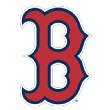 Boston Red Sox
Boston Red Sox
Travis Lakins, RHP
After suffering season-shortening elbow fractures in each of the previous two seasons, Lakins was moved to the bullpen in 2018, and it seemed to suit him. Suddenly a prospect who was once a command-deficient starter is now a reliever with four good pitches, the best of which are a cutter and curveball. He could play an integral bullpen role for the Red Sox, especially since they haven't added much from outside the organization this winter.
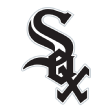 Chicago White Sox
Chicago White Sox
Seby Zavala, C
Zavala has flown under the radar in part because he has been in a catching timeshare with first-round pick Zack Collins for most of his pro career, though Zavala is the better defender of the two. While he scuffled at Triple-A last year, Zavala has hit for power at every level and he's a fine defensive catcher with all the desired intangibles. He's likely a long-term backup, but he'll probably see his first big league action this year.
 Cleveland Indians
Cleveland Indians
Jean Carlos Mejia, RHP
Mejia is 22 and has made only one start above low-A, but he has very advanced command of three seemingly average pitches that play up because of deception and extension. With the frame of an NBA shooting guard, Mejia has a fringy fastball that gets on hitters quicker than they expect, and he dots his breaking ball wherever he wants. Several Cleveland pitchers have exceeded expectations because they have elite breaking ball command, and Mejia could be next.
 Detroit Tigers
Detroit Tigers
Matt Hall, LHP
In the era of high-end velocity, Hall's upper-80s fastball might cause one to dismiss his chances of having any kind of big league impact. But spin rates have become a more integral part of player evaluation, and in this regard Hall's curveball is almost peerless. His curve arcs in at more than 2,800 rpm on average, and you can count on two hands the number of big league lefties with that kind of curveball spin.
 Houston Astros
Houston Astros
Bryan Abreu, RHP
After languishing in rookie ball for four years, Abreu had a breakout 2018 during which he reached full-season ball for the first time. The early-career, low-level lingering forced Houston to add Abreu to the 40-man roster to protect him from the Rule 5 draft because his mid-90s fastball and plus-plus breaking ball likely would have been targeted by someone. In the long term, he's a relief risk due to command and changeup issues, but he might make an impact in the bullpen this year.
 Kansas City Royals
Kansas City Royals
Kyle Zimmer, RHP
It's odd to think of Zimmer as any kind of sleeper. He's a former No. 4 overall pick and top-100 prospect, and his brother is a big leaguer. But years of injury ate away at Zimmer's stuff, and a player with a once-promising career was left with almost nothing; he was released by Kansas City in April and spent all of 2018 rehabbing. It appears to have worked, and he was sitting 94-97 in workouts before the Royals offered him a new deal and a spot on the 40-man. He's 27 now and might finally debut in 2019.
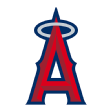 Los Angeles Angels
Los Angeles Angels
Luis Rengifo, UTIL
He might not have Chone Figgins' tools, but Rengifo could end up in a role similar to the former utility player, as he is a max-effort, multipositional athlete who grew into offensive production in 2018. Although he has always running deep counts, through trades from Seattle to Tampa Bay to L.A., a new leg kick in 2018 unlocked previously dormant power, and Rengifo raced three levels up to Triple-A. He's more talented than some of the bench players the Angels used last year.
 Minnesota Twins
Minnesota Twins
Michael Reed, OF
Byron Buxton is the only right-handed-hitting outfielder on the Twins' 40-man roster aside from the ultrapatient Reed, who was claimed off waivers from Atlanta last Halloween. Though he has set foot on a major league field in three separate years, Reed has played so little that he remains rookie-eligible at age 26. He has always put up high on-base percentages but has been unable to lift the ball and hit for much power. He might be a swing tweak away from something more, which a recent back injury might have prevented to this point.
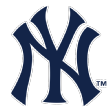 New York Yankees
New York Yankees
Joe Harvey, RHP
Harvey was a 19th-round pick in 2014, so his head shot on the Yankees' website is an appropriately anonymous silhouette among a litany of grinning superstars. It's not common for 27-year-old relievers who have yet to debut to have any kind of career, but Harvey's skill set is en vogue. He has a flat-planed mid-90s fastball that lives up in the zone, at the letters, and he has command of an above-average slider, which he spots where it's enticing but not hittable. It's solid middle-relief stuff that might help keep the bullpen afloat if injuries occur.
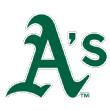 Oakland Athletics
Oakland Athletics
Luis Barrera, OF
Barrera finished his 2018 season with a piping-hot cup of coffee at Double-A, where he hit .328/.378/.450 and stole 13 bags in just 36 games. He's a no-doubt plus-plus runner with a plus-plus arm and should turn into at least a good fourth outfielder or platoon candidate at maturity, perhaps a bit more if the length in his swing gets ironed out.
 Seattle Mariners
Seattle Mariners
Joey Curletta, 1B
Curletta was becoming mayor of the Cal League, having mashed there for parts of three seasons before the Mariners (who acquired him from Philly, who had acquired him from the Dodgers) finally gave him a full-season look at Double-A. He performed well there, slashing .282/.383/.482 with 23 home runs. The right/right first base profile is tough, and there's reason to be skeptical of Curletta's performance because he was 24 in Double-A, but there are several examples of big-bodied power hitters (Curletta is 6-foot-5, 245 pounds) who blossom late, including Nelson Cruz. It probably takes a Ryon Healy and/or Edwin Encarnacion deal to get Curletta to the majors, but that seems possible.
 Tampa Bay Rays
Tampa Bay Rays
Andrew Velazquez, UTIL
If the Rays continue to bend and stretch baseball's norms with position players in the same way they have with pitching, it will likely involve the team mixing in favorable platoon matchups throughout the game. In order to do this, they'll need players with an unusual amount of defensive flexibility, such as Velazquez, who plays center field, shortstop and second base. He's not especially toolsy, just a versatile linchpin, but perhaps that alone is valuable if it enables others on the roster to do more damage. If nothing else, Velazquez could be at the center of an interesting new experiment.
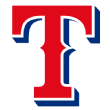 Texas Rangers
Texas Rangers
Wei-Chieh Huang, RHP
Huang was acquired from Arizona for Jake Diekman. His development has been barbecued low and slow despite his relatively advanced three-pitch mix, and he just reached Double-A last year at age 24. The Taiwanese righty is a wispy 6-foot-1 and doesn't throw all that hard, but his plus curveball and changeup should be sufficient to make him an atypical but effective reliever.
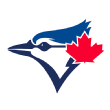 Toronto Blue Jays
Toronto Blue Jays
Patrick Murphy, RHP
Finally, we saw a healthy season for Murphy after he had missed so much time due to multiple severe injuries that included a ruptured UCL and thoracic outlet syndrome. Not only was Murphy finally healthy, but he was throwing really hard, up to 100 mph, and filling the strike zone. His changeup took a step forward and matches his curveball as an average big league pitch. Between Murphy, Julian Merryweather, Trent Thornton and Elvis Luciano, the Jays suddenly have several interesting new faces in the bullpen.
NATIONAL LEAGUE
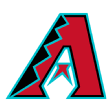 Arizona Diamondbacks
Arizona Diamondbacks
Merrill Kelly, RHP
Kelly is the oldest player covered here -- the former Phoenix-area high schooler and Arizona State Sun Devil is now 30. Kelly spent the last three years pitching in Korea for SK Wyverns. On the surface, his performance there seems mediocre, but a 3.80 ERA in an extreme offensive environment like Korea's is quite impressive. He has a five-pitch mix led by a fastball that sits 91-95 and a curveball and changeup that each flash above average. He might end up in Arizona's rotation at some point this year.
 Atlanta Braves
Atlanta Braves
Patrick Weigel, RHP
Weigel was supposed to be the first of all the exciting, young Braves pitching prospects to debut, but instead his elbow blew out midway through 2017. He missed the second half of that season and spent almost all of 2018 rehabbing, but he was back during fall instructional league, and so was his mid-90s fastball. The depth of Atlanta's pitching might push Weigel to the bullpen, where he and his four-pitch mix could dominate.
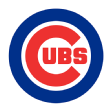 Chicago Cubs
Chicago Cubs
Justin Steele, LHP
Over the past several years, the Cubs have made a concerted effort to acquire as much generic upper-level pitching as they possibly can in order to protect themselves from a rash of injuries affecting a thin, aging staff. During that time, they've also drafted and groomed (mostly college) pitchers to backfill the big league staff from within, and that wave of talent is now approaching the majors. Steele, who was an over-slot high school draftee in 2014, came back from 2017 Tommy John late last year and appears nearly ready. He bumps 95 and has a plus curveball.
 Cincinnati Reds
Cincinnati Reds
Connor Joe, 3B/1B
Joe has had some injury issues and also has struggled to play good defense and hit for in-game power despite his considerable raw pop. Once a first-round pick, Joe bounced around to a few teams in minor trades before landing with the Reds as a Rule 5 selection this winter. One of his former teams, the Dodgers, has been particularly adept at enacting swing changes, and it appears they might have made a significant adjustment to Joe's swing before they lost him in the Rule 5. His ground ball rate is way down, and there might be game power here now.
 Colorado Rockies
Colorado Rockies
Justin Lawrence, RHP
There aren't many (any?) sidearmers in the big leagues who throw as hard as Lawrence, who was sitting 97-99 and touching 101 in the Arizona Fall League. Though he had some rough outings in the desert, the arm slot and velocity alone should be sufficient to thwart right-handed hitters, to say nothing of Lawrence's plus-flashing slider.
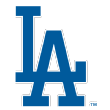 Los Angeles Dodgers
Los Angeles Dodgers
Josh Sborz, RHP
Sborz's K/9 rate doubled when the Dodgers moved him to the bullpen full time in 2018. His trebuchet overhand delivery makes for a very uncomfortable at-bat, far too awkward for hitters to make peace with if they only see Sborz once. Though he mostly attacks the top of the strike zone, his arm angle lets him change a hitter's eye level with his fastball alone. Hitters are often caught looking at Sborz's fastball at the knees after a previous one slipped past them at the letters.
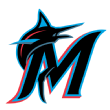 Miami Marlins
Miami Marlins
Jordan Holloway, RHP
Yet another Tommy John rehabber who didn't pitch until very late in the season, Holloway was so electric during the fall that the Marlins felt compelled to add him to their 40-man roster. He was 94-97 with a plus breaking ball and could contribute to a rebuilding big league club at some point in 2019.
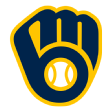 Milwaukee Brewers
Milwaukee Brewers
Tyrone Taylor, OF
It's easy and totally reasonable to write off Taylor's 2018 power output as a product of the altitude at Triple-A Colorado Springs. A former second-round pick and heralded prospect, Taylor had never hit for much power, and injuries sapped his speed and slowed his development. But Taylor is another who could be seeing the benefits of a swing change, as his ground ball rate dropped significantly in 2018 and is now well below the big league average, resting at 35 percent. It's possible some of the 2018 power uptick is for real.
 New York Mets
New York Mets
Daniel Zamora, LHP
Zamora's fastball rarely crests the 90 mph mark, so he barely throws it, instead relying on his slider almost 80 percent of the time. Sidearmers with sliders like this are typically just lefty specialists unless they have elite command, and Zamora's ability to move his slider all the way across the plate to his glove side with machine-like consistency indicates he might be more than just a one-out guy.
 Philadelphia Phillies
Philadelphia Phillies
Spencer Howard, RHP
Not all teams were properly on Howard before the 2017 draft, as he had barely pitched as an underclassman at Cal Poly and began his draft year in the bullpen. The Phillies saw him late, thought his stuff fit in a rotation and that maybe Howard was just starting to scratch the surface. They were right. His stuff continued to improve throughout 2018, his first full year as a starter, and by the end of the summer, he was sitting 94-97 with three plus secondary pitches. He's not currently on the 40-man roster, but if his command improves a bit in 2019, he might be one of the five best arms a Phillies club that should contend can deploy late in the summer.
 Pittsburgh Pirates
Pittsburgh Pirates
Pablo Reyes, UTIL
Up until late in 2018, Reyes had been a contact-oriented utilityman, a scrappy, high-effort player who might be one of the last bench pieces on a big league club one day. Late last year, though, he just started to swing harder. His cut became more violent, but Reyes' contact rates didn't move much. He crushed big league pitching in September, and while roster expansion dilutes talent and those numbers should be viewed through a skeptical lens, metrics that predict statistical output based on exit velocity and launch angle indicate much of it was legitimate. Reyes now projects as a premium utilityman who might provide something close to everyday value.
 San Diego Padres
San Diego Padres
Ty France, 3B
Christian Villanueva's excommunication to Japan opens up at-bats at third base, and France, a 34th-round pick in 2015, has performed well all the way up through Triple-A. He's not an exceptional defender, but France has above-average power and a very compact swing that makes him tough to beat with velocity. He projects as a corner bench bat long-term but might have an opportunity to play more than that this year.
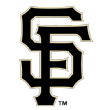 San Francisco Giants
San Francisco Giants
Melvin Adon, RHP
Just a year and a half ago, Adon was still more thrower than pitcher, his fastball humming in at 97-plus but rarely going where he wanted it to. Last season, Adon's ability to locate his fastball improved, as did his feel for a slider that was unhittable at times in the fall. He was a 24-year-old A-ball reliever last year but might end 2019 working high-leverage innings in the majors.
 St. Louis Cardinals
St. Louis Cardinals
Tommy Edman, 2B/SS
The quintessential overachieving Cardinals prospect, Edman was a light-hitting midround selection out of Stanford in 2016. Like many Cardinals prospects, he has quickly climbed the minor league ladder and reached Triple-A in just his second full season. The switch-hitting Edman has only doubles power, but his feel for contact and discerning eye for the strike zone have held water at the upper levels despite his lack of thump. As a middle infielder, that's enough not only to make a roster but potentially to play every day.
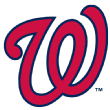 Washington Nationals
Washington Nationals
James Bourque, RHP
In 2018, Bourque ditched his changeup, moved to the bullpen and carved up high-A and Double-A hitters. The oft-injured nature of some of Washington's more prominent hard-throwing relievers could mean Bourque, who has better stuff than most of the Nats' milquetoast strike-throwing alternatives, gets an opportunity.
